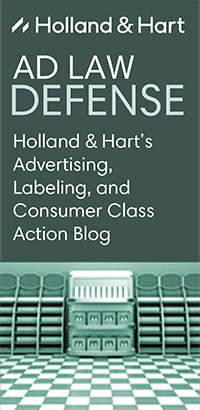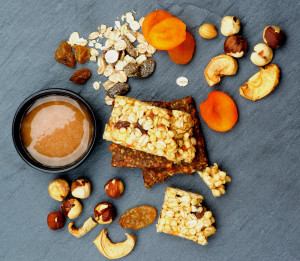**Spice Maker McCormack Moves the Multi-District Panel to Consolidate From Around the Country its Black Pepper “Slack-Fill” Lawsuits ** . . .
By: Brent E. Johnson
A “slack-fill” lawsuit is the term given to a consumer action alleging that a company is using empty space in non-transparent containers in a misleading or otherwise illegal manner, i.e. to confuse consumers as to volume or amount of the actual product they are buying. U.S. Food and Drug Administration (FDA) regulations contain a deeming provision that claimants typically rely on: “[a] container that does not allow the consumer to fully view its contents shall be considered to be filled as to be misleading if it contains nonfunctional slack-fill.” 21 C.F.R. § 100.100 (emphasis added). McCormick & Company is the newest target of nonfunctional “slack-fill” plaintiffs – the company has been sued in multiple states not just by consumer plaintiffs but also by in a competitor action under the Lanham Act.
The first to file was Watkins Inc., who sell spices and herbs in direct competition with McCormick. Watkins’ complaint filed on June 15, 2015, alleges that McCormick responded to a recent increase in black pepper prices by using misleading slack fill. Watkins Inc., v. McCormick and Co., Inc., 0:15-cv-02688-DSD-BRT (D. Minn.). Watkins alleges that McCormick’s (and other manufacturers) sell pepper in almost identical sized tins that traditionally have held 2, 4 or 8 ounces respectively – without slack fill. But Watkins alleges that in early 2015, due to a sharp rise in international black pepper prices, McCormick began filling these same pepper tins with approximately 25% less ground pepper without changing the size and shape of the tin and without changing the price. Because the tins were not transparent, the complaint alleges that consumers could not see that they were “slack-filled.” Watkins avers that McCormick has violated the Lanham Act and various state consumer laws .
Consumer-driven “copycat” suits were quickly filed around the country. Dupler v. McCormick & Company, Inc., No. 2:15- cv-3454-SJF-AKT (E.D.N.Y.); Bunting et al. v. McCormick & Company, Inc., No. 3:15-cv- 1648-BAS-BGS (S.D. Cal.); Marsh v. McCormick & Company, Inc., No. 2:15-cv-1625-MCEEFB (E.D. Cal.); Esparza v. McCormick & Company, Inc., No. 2:15-cv-5823-JFW-E (C.D. Cal.); Bittle v. McCormick & Company, Inc., No. 3:15-cv-989 (S.D. Ill.); Ferreri v. McCormick & Company, Inc., 7:15-cv-6760-KMK (S.D.N.Y.); Linker v. McCormick & Company, Inc., 4:15-cv-01340-CDP (E.D. Mo.). On August 10, 2015, McCormick moved to have the cases consolidated. Case MDL No. 2665.
This case is one to watch. McCormick’s principal defense is straightforward – i.e., whatever plaintiffs’ claims may be about what volume they thought they were buying based on the traditional size of the container, the tins clearly and unambiguously stated the correct volume. It is also one to watch because of the unusual interplay between competitor and consumer lawsuits. Arguments at the MDL Panel currently are focused, not on the merits, but on whether the cases should be consolidated, and if so, where.
This McCormick case is just the latest in a string of slack-fill suits. In March, 2015, Starbucks® faced a lawsuit alleging that it covered the neck of otherwise transparent glass bottles containing Frappuccino® and Iced Coffee with opaque wrapping that concealed non-functional slack-fill. Lee et al v. Starbucks Corporation 1:15-cv-01634-CBA-VMS (E.D.N.Y). The practice alleged by plaintiff is that Starbucks misled consumers as to how much liquid was in the bottles. The plaintiffs seek class action status, alleging that consumers across the country were injured by Starbucks’ alleged slack-fill practices. This case is another one to watch. There are many legitimate reasons a company will use slack-fill in its products, such as protecting the contents and accommodating tamper-resistant devices, or that the space is caused by product settling during shipping and handling. (A listing of legitimate reasons for slack-fill in food product containers as identified by the FDA can be found at 21 C.F.R. § 100.100). It is not clear at present which defense Starbucks will take.

